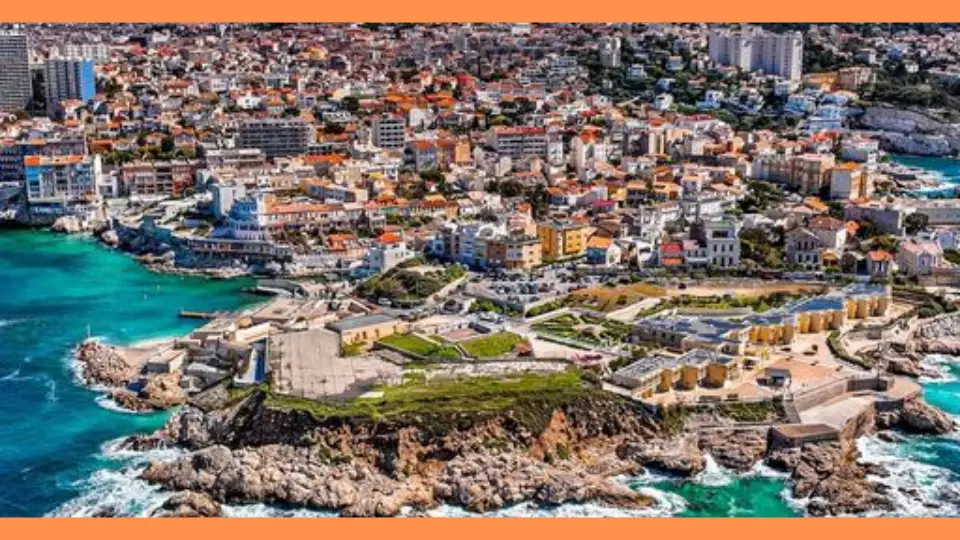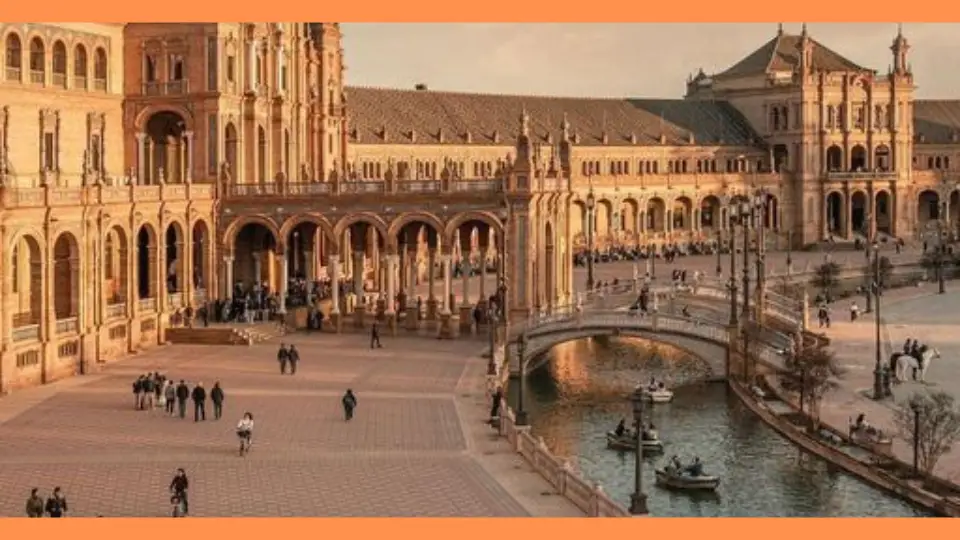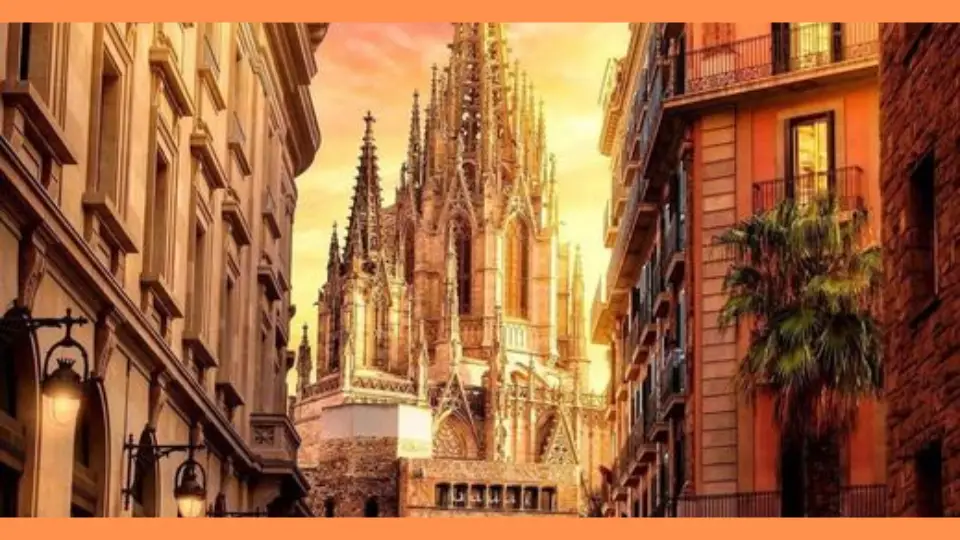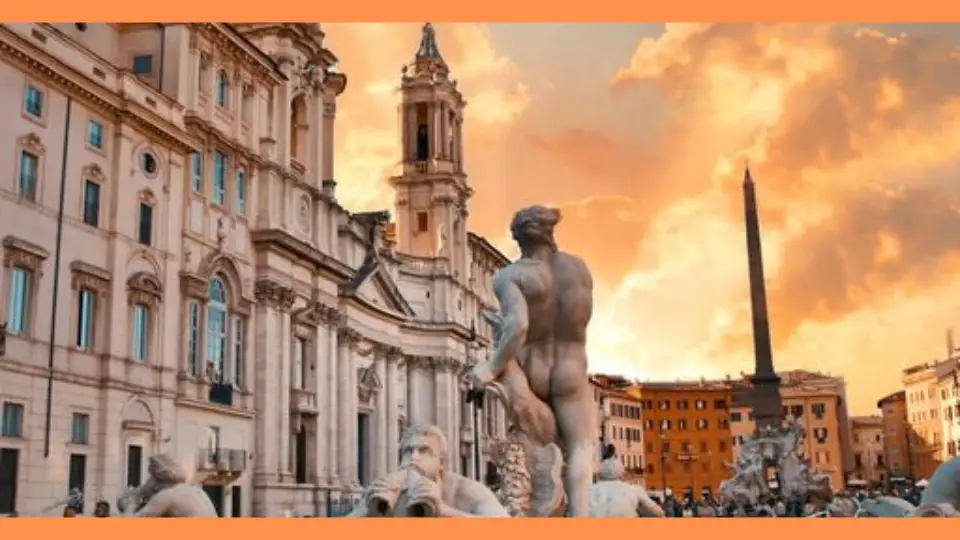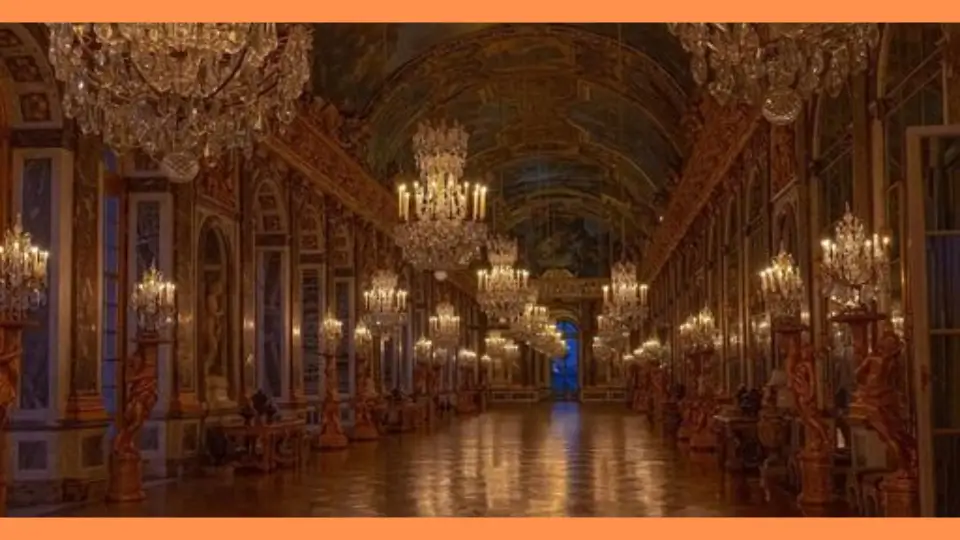Marseille’s allure lies in its captivating blend of natural beauty, cultural heritage, and gastronomic delights. Whether exploring its historic landmarks, basking in its natural landscapes, or savoring its delectable cuisine, visitors are sure to be enchanted by the charms of this vibrant Mediterranean city.
1. Getting to know about Marseille
Marseille, situated on the southeastern coast of France, holds a significant place in the country’s tourism landscape. Renowned for its rich history, vibrant culture, and stunning coastal landscapes, Marseille attracts visitors from around the globe. This introduction provides an overview of Marseille’s significance as a tourist destination, highlighting its diverse attractions and culinary offerings that contribute to its allure.
1.1. Overview of Marseille’s significance as a tourist destination
Marseille stands as a beacon of cultural diversity and historical significance along the Mediterranean coast. As France’s second-largest city and one of its oldest, Marseille boasts a rich tapestry of heritage that dates back over 2,600 years. This vibrant metropolis serves as a melting pot of cultures, with influences from Africa, the Middle East, and Europe interwoven into its fabric.
One of Marseille’s most iconic landmarks is its Old Port (Vieux-Port), a bustling harbor steeped in maritime history. Here, visitors can stroll along the waterfront promenade, admire the colorful fishing boats, and savor fresh seafood at waterfront cafes. The city’s historic center, Le Panier, beckons with its narrow streets, charming squares, and artisan boutiques, offering a glimpse into Marseille’s medieval past.
1.2. Mention the diverse attractions and culinary offerings that define Marseille
Marseille’s culinary scene reflects its status as a cultural crossroads, blending French Provencal flavors with North African spices and Mediterranean influences. The city’s markets, such as the bustling Marché des Capucins, are a feast for the senses, offering fresh produce, spices, and regional specialties. Visitors can sample local delicacies like bouillabaisse, a traditional fish stew, or socca, a savory chickpea pancake enjoyed street-side.
In addition to its culinary delights, Marseille boasts a diverse array of attractions that cater to every interest. Outdoor enthusiasts can explore the pristine beaches of the Corniche Kennedy or embark on a boat tour of the calanques. History buffs can delve into the city’s past at landmarks like the historic Fort Saint-Nicolas or the Château d’If, made famous by Alexandre Dumas’ novel “The Count of Monte Cristo.”
2. Tourist Attractions
From the iconic Old Port and the majestic Basilique Notre-Dame de la Garde to the rugged beauty of Calanques National Park, Marseille boasts a wealth of attractions that showcase its captivating landscapes and centuries-old landmarks.
2.1. Old Port of Marseille (Vieux-Port)
The Old Port of Marseille, or Vieux-Port, serves as the heart of the city and a symbol of its maritime heritage. Dating back to ancient Greek times, this bustling harbor is lined with vibrant cafes, seafood restaurants, and historic landmarks. Visitors can take a leisurely stroll along the waterfront promenade, watch fishermen unload their catch of the day, or hop on a boat tour to explore the coastline.
2.2. Basilique Notre-Dame de la Garde
Perched atop the highest point in Marseille, the Basilique Notre-Dame de la Garde offers panoramic views of the city and the Mediterranean Sea. This ornate basilica, built in the 19th century, is known for its stunning Neo-Byzantine architecture and iconic golden statue of the Virgin Mary, which towers over the city. Visitors can climb the grand staircase or take a scenic drive to reach the basilica and admire its intricate mosaics and ornamental details.
2.3. Le Panier District
Nestled in the heart of Marseille’s historic center, Le Panier is the city’s oldest district and a charming maze of narrow streets, colorful buildings, and artisan workshops. This bohemian neighborhood exudes a laid-back vibe, with trendy cafes, art galleries, and boutiques tucked away in its winding alleys. Visitors can wander through Le Panier’s picturesque squares, such as the Place des Moulins, and discover hidden gems like the Vieille Charité cultural complex.
2.4. Calanques National Park
Stretching along the Mediterranean coast between Marseille and Cassis, Calanques National Park is a breathtaking natural wonderland of limestone cliffs, hidden coves, and turquoise waters. This protected area offers endless opportunities for outdoor adventures, including hiking, rock climbing, and swimming. Visitors can explore the park’s rugged landscapes via scenic hiking trails or take a boat tour to admire the calanques from the water.
2.5. Museum of European and Mediterranean Civilisations (MuCEM)
Located on the waterfront near the Old Port, the Museum of European and Mediterranean Civilisations (MuCEM) is a modern architectural marvel dedicated to showcasing the cultural heritage of the region. Designed by architect Rudy Ricciotti, the museum’s striking concrete structure features intricate lattice work inspired by traditional Islamic architecture. Inside, visitors can explore a diverse collection of artifacts, artworks, and multimedia exhibits that trace the history and cultural exchange of the Mediterranean region.
3. Natural Landscapes
Marseille’s natural beauty is evident in its breathtaking calanques, pristine beaches, and verdant parks. Visitors can explore the stunning coastline, hike through rugged mountain trails, or simply relax amidst the city’s tranquil green spaces, immersing themselves in the splendor of nature.
3.1. Calanques
The Calanques are a series of stunning limestone cliffs and rocky inlets that stretch along the Mediterranean coastline between Marseille and Cassis. This unique natural landscape offers breathtaking views of turquoise waters, hidden beaches, and dramatic rock formations. Visitors can explore the Calanques by hiking along scenic trails that lead to secluded coves, such as Calanque d’En-Vau and Calanque de Sugiton, or by taking a boat tour to admire the rugged coastline from the sea.
3.2. Frioul Archipelago
Just a short boat ride from Marseille’s Old Port lies the Frioul Archipelago, a group of four picturesque islands known for their rugged beauty and rich maritime history. The largest island, Île de Ratonneau, is home to scenic hiking trails, pristine beaches, and historic sites like the Château d’If fortress, made famous by Alexandre Dumas’ novel “The Count of Monte Cristo.” Visitors can explore the islands’ rocky shores, swim in crystal-clear waters, and enjoy panoramic views of Marseille and the surrounding coastline.
3.3. Marseilleveyre Peak
Rising 432 meters above sea level, Marseilleveyre Peak offers panoramic views of Marseille, the Calanques, and the Mediterranean Sea. This iconic limestone summit is a popular destination for hikers and outdoor enthusiasts seeking stunning vistas and rugged terrain. Visitors can embark on a challenging trek to the summit via well-marked trails, passing through pine forests and rocky slopes along the way. At the top, they can enjoy a rewarding panoramic view of Marseille’s coastline and the sparkling waters below.
3.4. Parc Borély
Parc Borély is a vast green oasis located in the southern part of Marseille, offering a tranquil escape from the city’s hustle and bustle. This expansive park features lush gardens, serene ponds, and shaded pathways ideal for leisurely strolls or picnics. Visitors can explore the park’s botanical gardens, admire colorful flower beds, and relax by the water’s edge. Parc Borély also hosts cultural events, outdoor concerts, and recreational activities throughout the year, making it a beloved destination for locals and tourists alike.
3.5. Vallon des Auffes
Vallon des Auffes is a charming fishing village nestled along Marseille’s rocky coastline, renowned for its picturesque harbor and traditional Provençal charm. This idyllic enclave is characterized by colorful fishing boats, waterfront restaurants, and quaint stone cottages built into the cliffs. Visitors can wander along the scenic promenade, watch fishermen unload their catch of the day, or enjoy fresh seafood dishes at one of the village’s waterside eateries. Vallon des Auffes offers a peaceful retreat where visitors can soak in the beauty of Marseille’s coastal landscapes and savor the laid-back atmosphere of this historic fishing village.
4. Cultural Sites
Imbued with a rich tapestry of history and culture, Marseille is home to a plethora of cultural sites, including the historic Château d’If, the majestic Palais Longchamp, and the modernist masterpiece La Cité Radieuse. These landmarks offer a glimpse into Marseille’s storied past and vibrant present.
4.1. Château d’If
The Château d’If is a historic fortress located on the small island of If, just offshore from Marseille’s Old Port. Made famous by Alexandre Dumas’ novel “The Count of Monte Cristo,” this imposing structure served as a prison during the 16th and 17th centuries. Visitors can explore the fortress’s labyrinthine corridors, learn about its intriguing history, and enjoy panoramic views of Marseille and the Mediterranean Sea from its ramparts. The Château d’If offers a captivating glimpse into Marseille’s maritime past and literary heritage.
4.2. Palais Longchamp
The Palais Longchamp is an architectural masterpiece located in Marseille’s 4th arrondissement. Built in the 19th century to commemorate the construction of the Canal de Marseille, this grand monument is renowned for its stunning neoclassical design and majestic water features. Visitors can admire the palace’s ornate façade, stroll through its landscaped gardens, and marvel at the monumental fountain cascading down the central staircase. The Palais Longchamp is home to the Musée des Beaux-Arts de Marseille and the Muséum d’Histoire Naturelle, making it a cultural hub where art and history converge.
4.3. Fort Saint-Jean
Fort Saint-Jean is a historic fortress situated at the entrance of Marseille’s Old Port, overlooking the Mediterranean Sea. Dating back to the 17th century, this imposing citadel has played a strategic role in Marseille’s maritime defenses for centuries. Visitors can explore its ramparts, bastions, and underground tunnels, uncovering layers of history that span from medieval times to the present day. Fort Saint-Jean also houses the Museum of European and Mediterranean Civilisations (MuCEM), adding a contemporary cultural dimension to its storied past.
4.4. La Cité Radieuse (Unité d’Habitation)
Designed by renowned architect Le Corbusier, La Cité Radieuse, also known as the Unité d’Habitation, is a pioneering example of modernist architecture located in Marseille’s 8th arrondissement. Built between 1947 and 1952, this innovative residential complex features bold geometric shapes, communal facilities, and a unique “vertical garden city” concept. Visitors can take guided tours of the building to admire its architectural innovations, learn about its utopian vision, and explore its interior spaces, including a rooftop terrace with panoramic views of Marseille.
4.5. Abbaye Saint-Victor
The Abbaye Saint-Victor is a historic abbey located in Marseille’s Old Port district, dating back to the 5th century. This ancient religious complex is renowned for its Romanesque architecture, crypts, and medieval cloisters. Visitors can explore the abbey’s ornate chapels, tombs of early Christian martyrs, and intricately carved stone details, providing insight into Marseille’s rich religious heritage. The Abbaye Saint-Victor remains an important spiritual and cultural landmark, offering a serene retreat amidst the bustling cityscape of Marseille.
5. Cuisine
Marseille’s culinary scene is a feast for the senses, with iconic dishes like bouillabaisse, pastis, and navettes delighting food enthusiasts from around the world. From savory stews to sweet treats, Marseille’s gastronomic offerings reflect its diverse cultural influences and maritime heritage.
5.1. Bouillabaisse
Bouillabaisse is Marseille’s most famous culinary export, a traditional Provençal fish stew that originated in the port city. Made with a variety of local fish and shellfish, including red rascasse, sea robin, and monkfish, bouillabaisse is flavored with saffron, garlic, tomatoes, and aromatic herbs. Served with rouille, a garlic-infused mayonnaise, and crusty bread, this hearty and flavorful dish reflects Marseille’s maritime heritage and is a must-try for visitors seeking an authentic taste of the city.
5.2. Pastis
Pastis is an iconic French aperitif closely associated with Marseille and the wider Provence region. This anise-flavored liqueur is traditionally enjoyed diluted with water, which creates a cloudy, refreshing drink with a distinctive licorice-like flavor. Pastis is often enjoyed as a pre-dinner drink, especially during the hot summer months, and is a popular choice at Marseille’s sidewalk cafes and bistros.
5.3. Navettes
Navettes are traditional Provençal cookies that are synonymous with Marseille’s culinary heritage. These boat-shaped biscuits are flavored with orange flower water and often enjoyed during religious festivals such as Candlemas and Easter. Crisp on the outside and tender on the inside, navettes are a delightful sweet treat that pairs perfectly with a cup of coffee or tea, offering a taste of Marseille’s rich gastronomic traditions.
5.4. Pieds et Paquets
Pieds et paquets is a classic Marseille dish that consists of lamb tripe (pieds) and stuffed sheep’s stomach (paquets) cooked in a savory broth flavored with tomatoes, onions, garlic, and herbs. This hearty and rustic dish has its roots in Marseille’s working-class cuisine and is often enjoyed during festive gatherings and family meals. With its robust flavors and comforting textures, pieds et paquets exemplifies the hearty and satisfying fare for which Marseille is known.
5.5. Côte de Bœuf marseillaise
Côte de bœuf marseillaise is a succulent rib steak prepared in the traditional Marseille style, grilled to perfection and served with a flavorful herb and garlic butter. This iconic dish showcases Marseille’s love of quality meat and simple yet delicious cooking techniques. Served alongside crisp French fries or a fresh green salad, côte de bœuf marseillaise is a beloved favorite among locals and visitors alike, offering a taste of Marseille’s culinary prowess and gastronomic heritage.
With its rich tapestry of history, stunning natural landscapes, vibrant cultural scene, and mouthwatering cuisine, Marseille offers a truly immersive travel experience that captivates the senses and leaves a lasting impression. Whether strolling along its bustling waterfront, exploring its ancient streets, or indulging in its culinary delights, Marseille beckons travelers to discover its myriad treasures and create unforgettable memories amidst the beauty of the Mediterranean coast.

